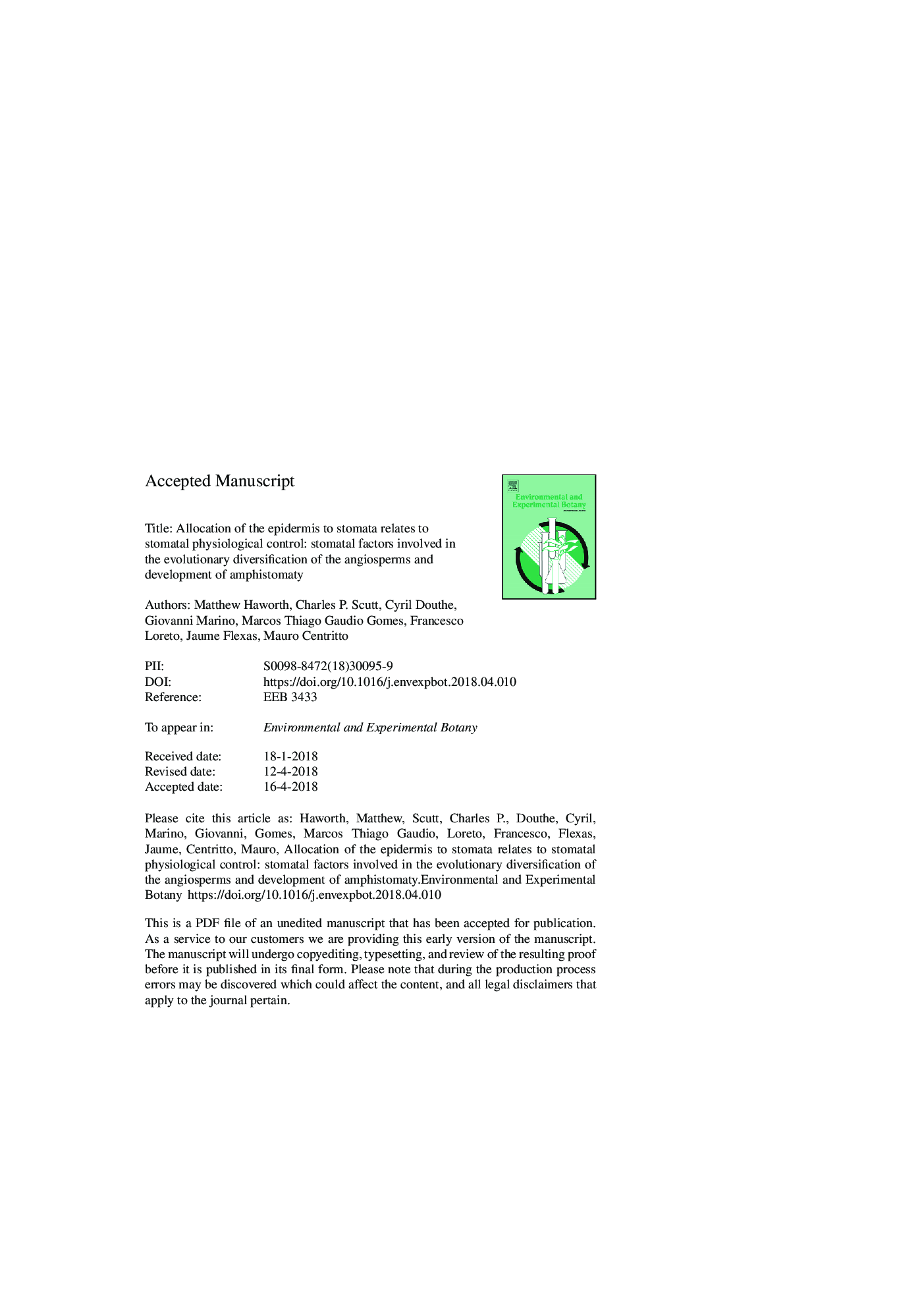| کد مقاله | کد نشریه | سال انتشار | مقاله انگلیسی | نسخه تمام متن |
|---|---|---|---|---|
| 8886959 | 1628026 | 2018 | 35 صفحه PDF | دانلود رایگان |
عنوان انگلیسی مقاله ISI
Allocation of the epidermis to stomata relates to stomatal physiological control: Stomatal factors involved in the evolutionary diversification of the angiosperms and development of amphistomaty
ترجمه فارسی عنوان
تخصیص اپیدرم به استوماتا مربوط به کنترل فیزیولوژیک دیمنتال است: عوامل استوماتیک درگیر در تنوع تکاملی ناحیه زخم ها و ایجاد
دانلود مقاله + سفارش ترجمه
دانلود مقاله ISI انگلیسی
رایگان برای ایرانیان
کلمات کلیدی
تکامل دندانی، هدایت دهان، تکامل گیاه، تکامل انبساطم، فتوسنتز، بهره وری استفاده از آب،
موضوعات مرتبط
علوم زیستی و بیوفناوری
علوم کشاورزی و بیولوژیک
بوم شناسی، تکامل، رفتار و سامانه شناسی
چکیده انگلیسی
The proportion of the leaf epidermis allocated to stomata (EP%) and stomatal function (the capacity to adjust stomatal pore area to regulate stomatal conductance: Gs) are key components in leaf gas exchange, and have likely played a major role in plant evolution. We examined the velocity of change in Gs (Gs50%) during a transition from steady state conditions in the light to darkness and EP% in 31 vascular plants with diverse evolutionary origins. Across all species, EP% correlated to Gs50% and the magnitude of Gs reduction (GsLIGHT-GsDARK) after the cessation of illumination. Those species with higher absolute and relative Gs50% values tended to distribute stomata more evenly over the abaxial and adaxial leaf surfaces, whereas species with lower Gs50% utilised only one leaf surface for gas exchange. Groups that diverged at relatively early stages in plant phylogeny, including ferns, gymnosperms and basal angiosperms, exhibited lower EP% and Gs50%, and took longer to achieve the initial 50% reduction in Gs (T50%) than the more recently diverging angiosperms; in particular, the amphistomatous monocot grasses, which also showed higher absolute rates of photosynthesis and Gs. We propose that selective pressures induced by declining [CO2] over the past 100 Myr have favoured greater allocation of the epidermis to stomata, increased amphistomaty (the presence of stomata on the abaxial and adaxial surfaces) and faster control of Gs in the more recently derived angiosperm groups. Modification of photosynthesis to enhance the carbon and water use efficiencies of C3 crops may therefore require concurrent increases in stomatal density and in the capacity of stomata to react quickly to environmental pressures.
ناشر
Database: Elsevier - ScienceDirect (ساینس دایرکت)
Journal: Environmental and Experimental Botany - Volume 151, July 2018, Pages 55-63
Journal: Environmental and Experimental Botany - Volume 151, July 2018, Pages 55-63
نویسندگان
Matthew Haworth, Charles P. Scutt, Cyril Douthe, Giovanni Marino, Marcos Thiago Gaudio Gomes, Francesco Loreto, Jaume Flexas, Mauro Centritto,
